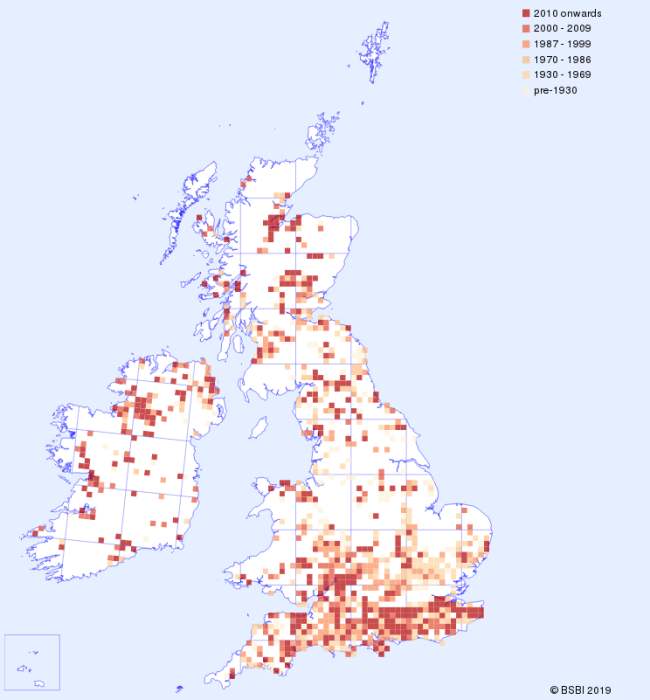Bird's-nest Orchid is entirely reliant on a relationship with fungi in order to grow and flower, since the tiny amount of chlorophyll within this plant is not sufficient for photosynthesis (the process by which most plants produce the food that they need) to take place. Most commonly found in mature dense-canopied Beech woodland in southern England, Bird's-nest Orchid is less common in northern Britain. The specific habitat and overall brown-to-yellow colouring of the plant make this species easy to distinguish from other orchids; however, confusion with some members of the Orobanche genus (Broomrapes) is more likely. Although most commonly associated with Beech trees, Bird's-nest Orchid is also found under coppiced hazel, in mixed deciduous woodland, and sometimes (more often in mainland Europe) under pine trees, all on predominantly alkaline substrates. The dead flower spikes of this orchid can persist for up to two years, but their dried-up appearance is very different from the honey-coloured and waxy-looking new flowers which appear from late April until early August. Bird's-nest Orchids can appear in large groups during a warm, wet spring, but really dry conditions can prevent them from appearing above the ground altogether. In Europe these orchids occur from Scandinavia in the north and southwards to the Mediterranean, where they are found on higher ground only.
| Distribution Map | Key Features | |
 |
Records for the Bird's-nest Orchid from BSBI are shown on the map with most recent in front. (Hover the mouse over the small map to expand it.) |
Plant: 15 to 52cm tall. Stem thick and yellowish and usually growing singly, although sometimes two stems may appear from a rhizome. |
Image Gallery for Bird's-nest Prchid Neottia nidus-avis
| Pollination | Taxonomy & Hybrids |
Pollination is carried out by a variety of small insects including flies, which are apparently attracted by nectar secreted by the plant. The pollination mechanism used by the plant is very similar to that of the Common Twayblade, which has been the subject of much interest and study. |
The specific name nidus-avis means 'bird's-nest' and refers to the structure of the roots, which resemble a tangled and rather badly made bird's nest. |
Articles about Bird's-nest Orchid in JHOS
